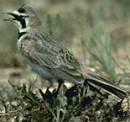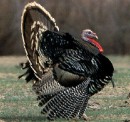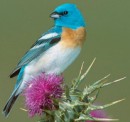 Numerous birds eat grains and other hard, dry seeds as their primary dietary component. Many sparrows, quail, doves, and finches eat seeds all year, but facultative granivores switch to other foods when seeds become scarce. In temperate climates, seeds are most available in summer through early winter.
Numerous birds eat grains and other hard, dry seeds as their primary dietary component. Many sparrows, quail, doves, and finches eat seeds all year, but facultative granivores switch to other foods when seeds become scarce. In temperate climates, seeds are most available in summer through early winter.Seeds of most wild plants are small, usually ranging from 0.1-10 mg in weight, and are typically abundant in open habitats, such as deserts, steppes, and grasslands. The seed coat of grasses may be relatively easy to remove, but nuts tend to have a tough coat that is difficult to penetrate.
Seeds have the highest nutrient density of any part of the plant and are rich in starch and low to moderate in protein content. They are also low in fiber and have variable oil content, ranging from low levels in grass seeds to high levels in oil seeds, e.g., sunflowers. Grasses are usually very low in calcium.
 Some granivorous birds swallow seeds whole and use the gizzard to grind off the shell (doves, quail, turkey). More frequently, the beak is used to remove and discard the shell, and the beak is typically short and stout with pronounced ridges that aid in processing seeds. The coats of many dicots are usually cut off while grass seeds are crushed to remove the coat. The size and shape of the beak, the extent of the gape, and the strength of the jaw muscles determine the speed and efficiency with which a species can consume a certain type and size of seed.
Some granivorous birds swallow seeds whole and use the gizzard to grind off the shell (doves, quail, turkey). More frequently, the beak is used to remove and discard the shell, and the beak is typically short and stout with pronounced ridges that aid in processing seeds. The coats of many dicots are usually cut off while grass seeds are crushed to remove the coat. The size and shape of the beak, the extent of the gape, and the strength of the jaw muscles determine the speed and efficiency with which a species can consume a certain type and size of seed.Many granivores have either gular or esophageal pouches to carry the seeds from foraging bouts, or a large crop that can store seeds and provide moisture for softening seeds and hydrating the starch prior to digestion. The proventriculus is usually moderate in size relative to more faunivorous relatives but may have extensive gastric glands for promoting protein digestion. The gizzard of granivores is always large and muscular, especially in those birds which swallow seeds whole. Grit is commonly trapped in the cuticle lining the gizzard and aids in grinding seeds. The small intestine of granivores is relatively long and the pancreas large. Ceca are typically small or vestigial.
 Seeds are more nutritionally complete than nectar or fruits, with a higher ratio of protein to energy and superior levels of vitamins and minerals. The efficiency of digestion of seeds is high, as a result of the low fiber content, long small intestine, high enzyme production, and moderate rate of passage. Wild seeds may contain some fiber, tannins, trypsin inhibitors, and other toxins and antimetabolites that reduce digestive efficiency. Passerines tend to be more efficient at digesting wild seeds than nonpasserines because many remove the seed coat prior to consumption. Birds have some capacity to choose among different seeds on the basis of ease and speed of husking, toxin content, amino acid balance, and caloric content. Many species consume insects for additional protein required for growth and reproduction, and the timing of reproduction coresponds with seasonal insect abundance.
Seeds are more nutritionally complete than nectar or fruits, with a higher ratio of protein to energy and superior levels of vitamins and minerals. The efficiency of digestion of seeds is high, as a result of the low fiber content, long small intestine, high enzyme production, and moderate rate of passage. Wild seeds may contain some fiber, tannins, trypsin inhibitors, and other toxins and antimetabolites that reduce digestive efficiency. Passerines tend to be more efficient at digesting wild seeds than nonpasserines because many remove the seed coat prior to consumption. Birds have some capacity to choose among different seeds on the basis of ease and speed of husking, toxin content, amino acid balance, and caloric content. Many species consume insects for additional protein required for growth and reproduction, and the timing of reproduction coresponds with seasonal insect abundance.Seed availability follows a distinct annual rhythm outside the tropics. When seeds are scarce, granivores may switch to other foods or migrate. Often, the scarcity of seeds at the beginning of the growing season coincides with the emergence of substantial number of insects, which are consumed by facultative granivores.